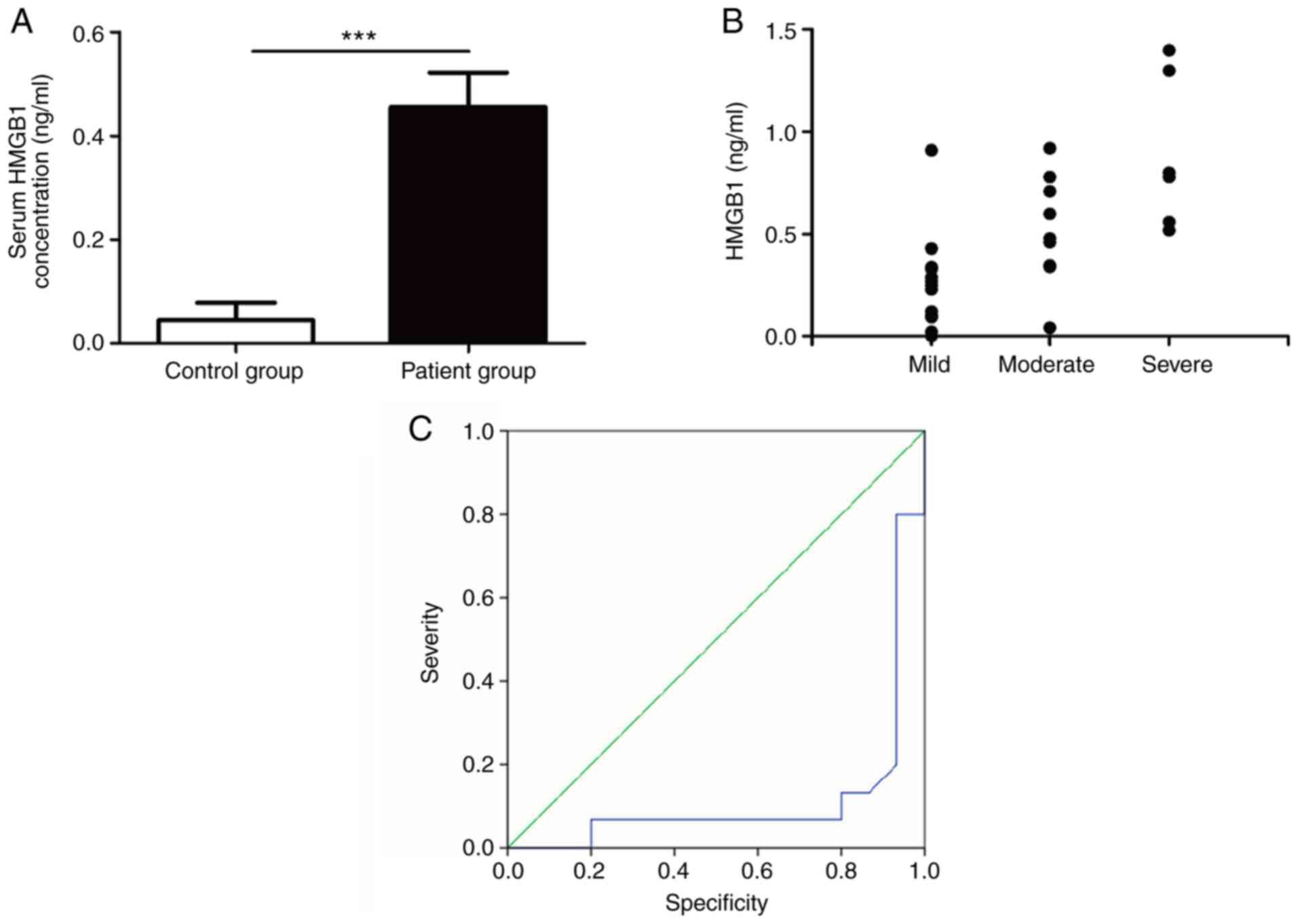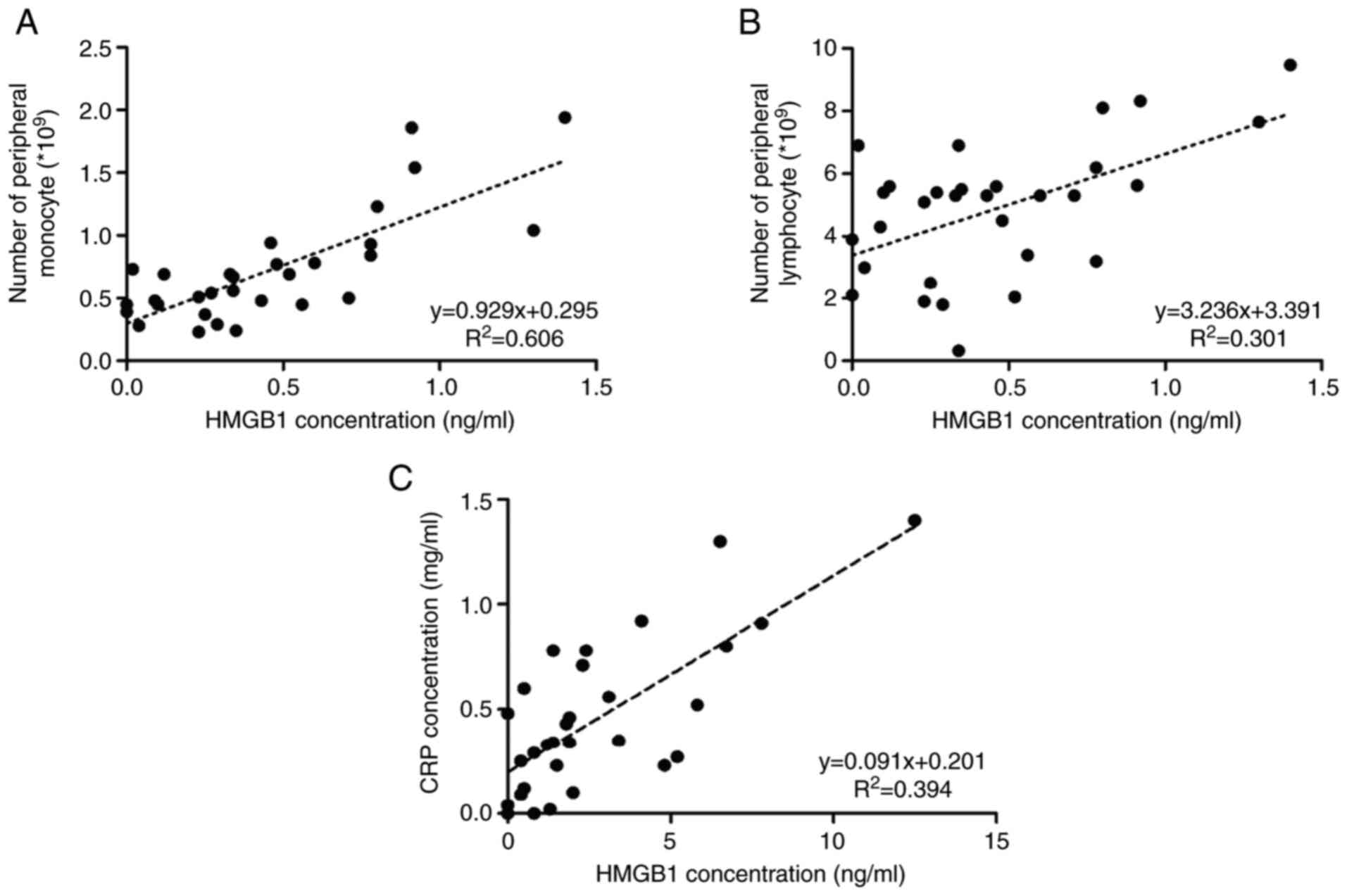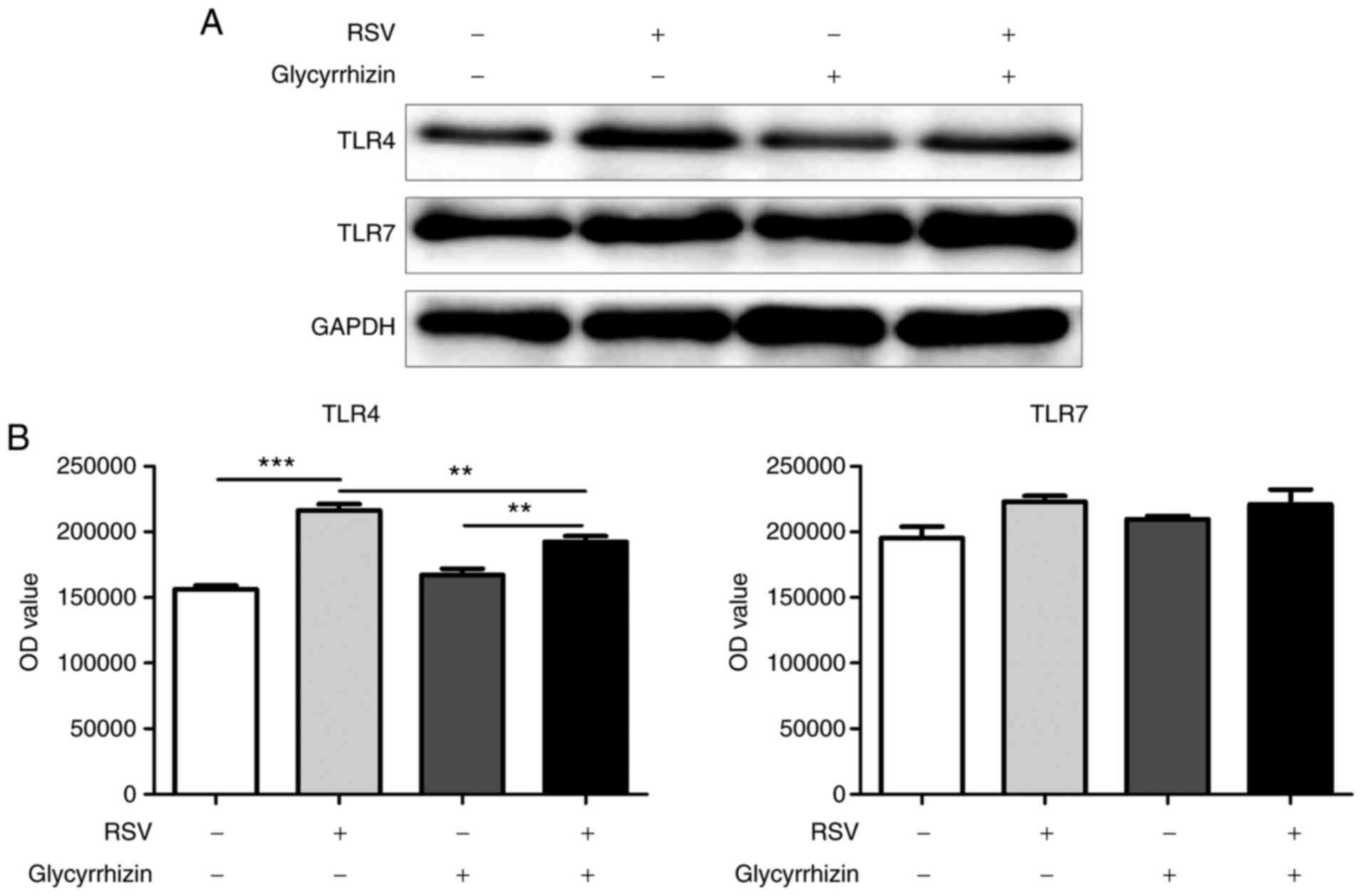|
1
|
Arruvito L, Raiden S and Geffner J: Host
response to respiratory syncytial virus infection. Curr Opin Infect
Dis. 28:259–266. 2015.PubMed/NCBI View Article : Google Scholar
|
|
2
|
Bacharier LB, Cohen R, Schweiger T,
Yin-Declue H, Christie C, Zheng J, Schechtman KB, Strunk RC and
Castro M: Determinants of asthma after severe respiratory syncytial
virus bronchiolitis. J Allergy Clin Immunol. 130:91–100.e3.
2012.PubMed/NCBI View Article : Google Scholar
|
|
3
|
Melvin W and Giovanni P: Respiratory
syncytial virus prevention and therapy: Past, present, and future.
Pediatr Pulmonol. 46:324–347. 2011.PubMed/NCBI View Article : Google Scholar
|
|
4
|
Sigurs N, Bjarnason R, Sigurbergsson F and
Kjellman B: Respiratory syncytial virus bronchiolitis in infancy is
an important risk factor for asthma and allergy at age 7. Am J
Respir Crit Care Med. 161:1501–1507. 2000.PubMed/NCBI View Article : Google Scholar
|
|
5
|
Ullah MA, Loh Z, Gan WJ, Zhang V, Yang H,
Li JH, Yamamoto Y, Schmidt AM, Armour CL, Hughes JM, et al:
Receptor for advanced glycation end products and its ligand
high-mobility group box-1 mediate allergic airway sensitization and
airway inflammation. J Allergy Clin Immunol. 134:440–450.
2014.PubMed/NCBI View Article : Google Scholar
|
|
6
|
Zhou Y, Jiang YQ, Wang WX, Zhou ZX, Wang
YG, Yang L and Ji YL: HMGB1 and RAGE levels in induced sputum
correlate with asthma severity and neutrophil percentage. Hum
Immunol. 73:1171–1174. 2012.PubMed/NCBI View Article : Google Scholar
|
|
7
|
Hosakote YM, Brasier AR, Casola A,
Garofalo RP and Kurosky A: RSV infection triggers epithelial HMGB1
release as a damage-associated molecular pattern promoting a
monocytic inflammatory response. J Virol. 90:9618–9631.
2016.PubMed/NCBI View Article : Google Scholar
|
|
8
|
Rendon-Mitchell B, Ochani M, Li J, Han J,
Wang H, Yang H, Susarla S, Czura C, Mitchell RA, Chen G, et al:
IFN-gamma induces high mobility group box 1 protein release partly
through a TNF-dependent mechanism. J Immunol. 170:3890–3897.
2003.PubMed/NCBI View Article : Google Scholar
|
|
9
|
Yang H, Antoine DJ, Andersson U and Tracey
KJ: The many faces of HMGB1: molecular structure-functional
activity in inflammation, apoptosis, and chemotaxis. J Leukoc Biol.
93:865–873. 2013.PubMed/NCBI View Article : Google Scholar
|
|
10
|
Russell CD, Unger SA, Walton M and
Schwarze J: The human immune response to respiratory syncytial
virus infection. Clin Microbiol Rev. 30:481–502. 2017.PubMed/NCBI View Article : Google Scholar
|
|
11
|
Gallucci S and Matzinger P: Danger
signals: SOS to the immune system. Curr Opin Immunol. 13:114–119.
2001.PubMed/NCBI View Article : Google Scholar
|
|
12
|
Yu M, Wang H, Ding A, Golenbock DT, Latz
E, Czura CJ, Fenton MJ, Tracey KJ and Yang H: HMGB1 signals through
toll-like receptor (TLR) 4 and TLR2. Shock. 26:174–179.
2006.PubMed/NCBI View Article : Google Scholar
|
|
13
|
Ojo OO, Ryu MH, Jha A, Unruh H and Halayko
AJ: High-mobility group box 1 promotes extracellular matrix
synthesis and wound repair in human bronchial epithelial cells. Am
J Physiol Lung Cell Mol Physiol. 309:L1354–L1366. 2015.PubMed/NCBI View Article : Google Scholar
|
|
14
|
Kang R, Chen R, Zhang Q, Hou W, Wu S, Cao
L, Huang J, Yu Y, Fan XG, Yan Z, et al: HMGB1 in health and
disease. Mol Aspects Med. 40:1–116. 2014.PubMed/NCBI View Article : Google Scholar
|
|
15
|
Qi F, Wang D, Liu J, Zeng S, Xu L, Hu H
and Liu B: Respiratory macrophages and dendritic cells mediate
respiratory syncytial virus-induced IL-33 production in TLR3- or
TLR7-dependent manner. Int Immunopharmacol. 29:408–415.
2015.PubMed/NCBI View Article : Google Scholar
|
|
16
|
Kim TH, Oh DS, Jung HE, Chang J and Lee
HK: Plasmacytoid dendritic cells contribute to the production of
IFN-β via TLR7-MyD88-dependent pathway and CTL priming during
respiratory syncytial virus infection. Viruses.
11(730)2019.PubMed/NCBI View Article : Google Scholar
|
|
17
|
Hou CC, Zhao HJ, Cai SX, Li WJ, Tong WC
and Liu LY: Respiratory syncytial virus increases the expression
and release of high mobility group Box-1 protein in the lung tissue
of mice. Nan Fang Yi Ke Da Xue Xue Bao. 30:700–703. 2010.PubMed/NCBI(In Chinese).
|
|
18
|
Rayavara K, Kurosky A, Stafford SJ, Garg
NJ, Brasier AR, Garofalo RP and Hosakote YM: Proinflammatory
effects of respiratory syncytial virus-induced epithelial HMGB1 on
human innate immune cell activation. J Immunol. 201:2753–2766.
2018.PubMed/NCBI View Article : Google Scholar
|
|
19
|
Gremion C and Cerny A: Hepatitis C virus
and the immune system: A concise review. Rev Med Virol. 15:235–268.
2005.PubMed/NCBI View
Article : Google Scholar
|
|
20
|
Tang D, Kang R, Cheh CW, Livesey KM, Liang
X, Schapiro NE, Benschop R, Sparvero LJ, Amoscato AA, Tracey KJ, et
al: HMGB1 release and redox regulates autophagy and apoptosis in
cancer cells. Oncogene. 29:5299–5310. 2010.PubMed/NCBI View Article : Google Scholar
|
|
21
|
Tang D, Kang R, Livesey KM, Cheh CW,
Farkas A, Loughran P, Hoppe G, Bianchi ME, Tracey KJ, Zeh HJ III
and Lotze MT: Endogenous HMGB1 regulates autophagy. J Cell Biol.
190:881–892. 2010.PubMed/NCBI View Article : Google Scholar
|
|
22
|
Srinivasakumar N, Ogra PL and Flanagan TD:
Characteristics of fusion of respiratory syncytial virus with HEp-2
cells as measured by R18 fluorescence dequenching assay. J Virol.
65:4063–4069. 1991.PubMed/NCBI View Article : Google Scholar
|
|
23
|
Lee FE, Walsh EE, Falsey AR, Lumb ME, Okam
NV, Liu N, Divekar AA, Hall CB and Mosmann TR: Human infant
respiratory syncytial virus (RSV)-specific type 1 and 2 cytokine
responses ex vivo during primary RSV infection. J Infect Dis.
195:1779–1788. 2007.PubMed/NCBI View
Article : Google Scholar
|
|
24
|
Morris S, Swanson MS, Lieberman A, Reed M,
Yue Z, Lindell DM and Lukacs NW: Autophagy-mediated dendritic cell
activation is essential for innate cytokine production and APC
function with respiratory syncytial virus responses. J Immunol.
187:3953–3961. 2011.PubMed/NCBI View Article : Google Scholar
|
|
25
|
Reed M, Morris SH, Jang S, Mukherjee S,
Yue Z and Lukacs NW: Autophagy-inducing protein beclin-1 in
dendritic cells regulates CD4 T cell responses and disease severity
during respiratory syncytial virus infection. J Immunol.
191:2526–2537. 2013.PubMed/NCBI View Article : Google Scholar
|
|
26
|
Yang L, Chai W, Wang Y, Cao L, Xie M, Yang
M, Kang R and Yu Y: Reactive oxygen species regulate the
differentiation of acute promyelocytic leukemia cells through
HMGB1-mediated autophagy. Am J Cancer Res. 5:714–725.
2015.PubMed/NCBI
|













